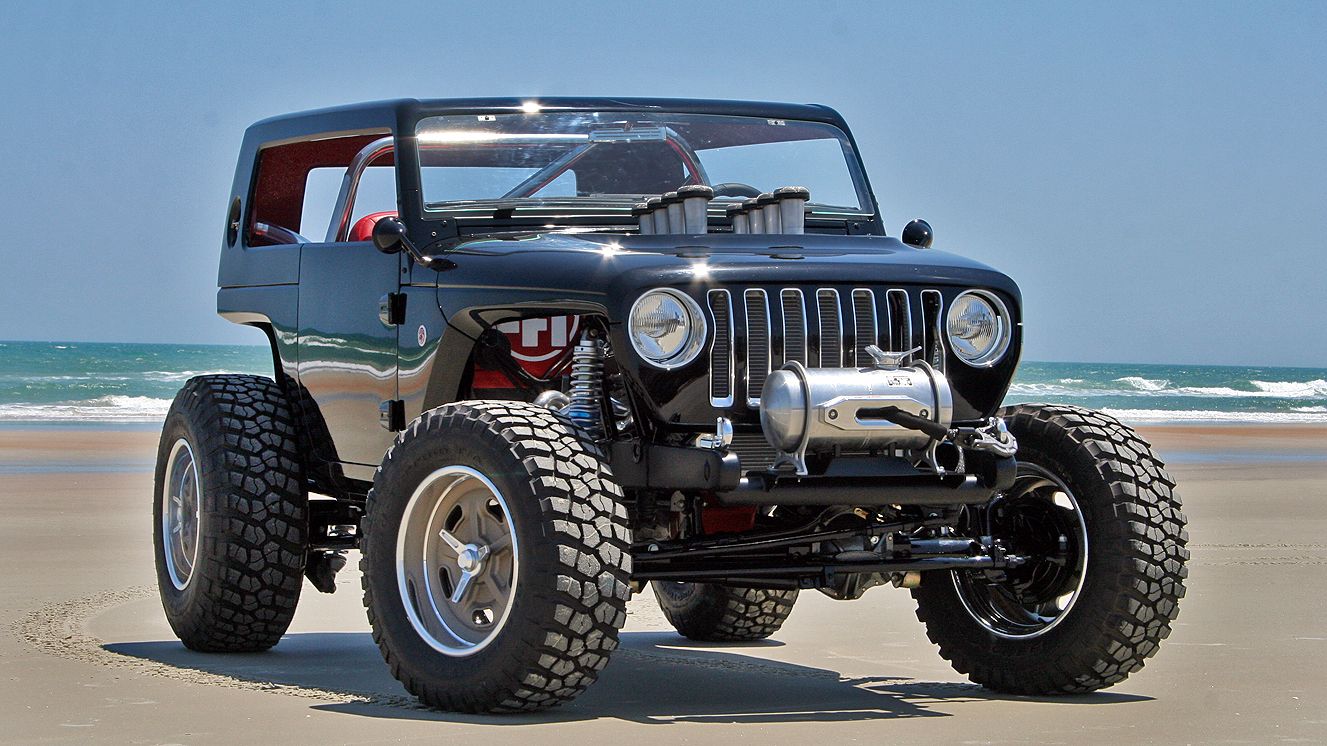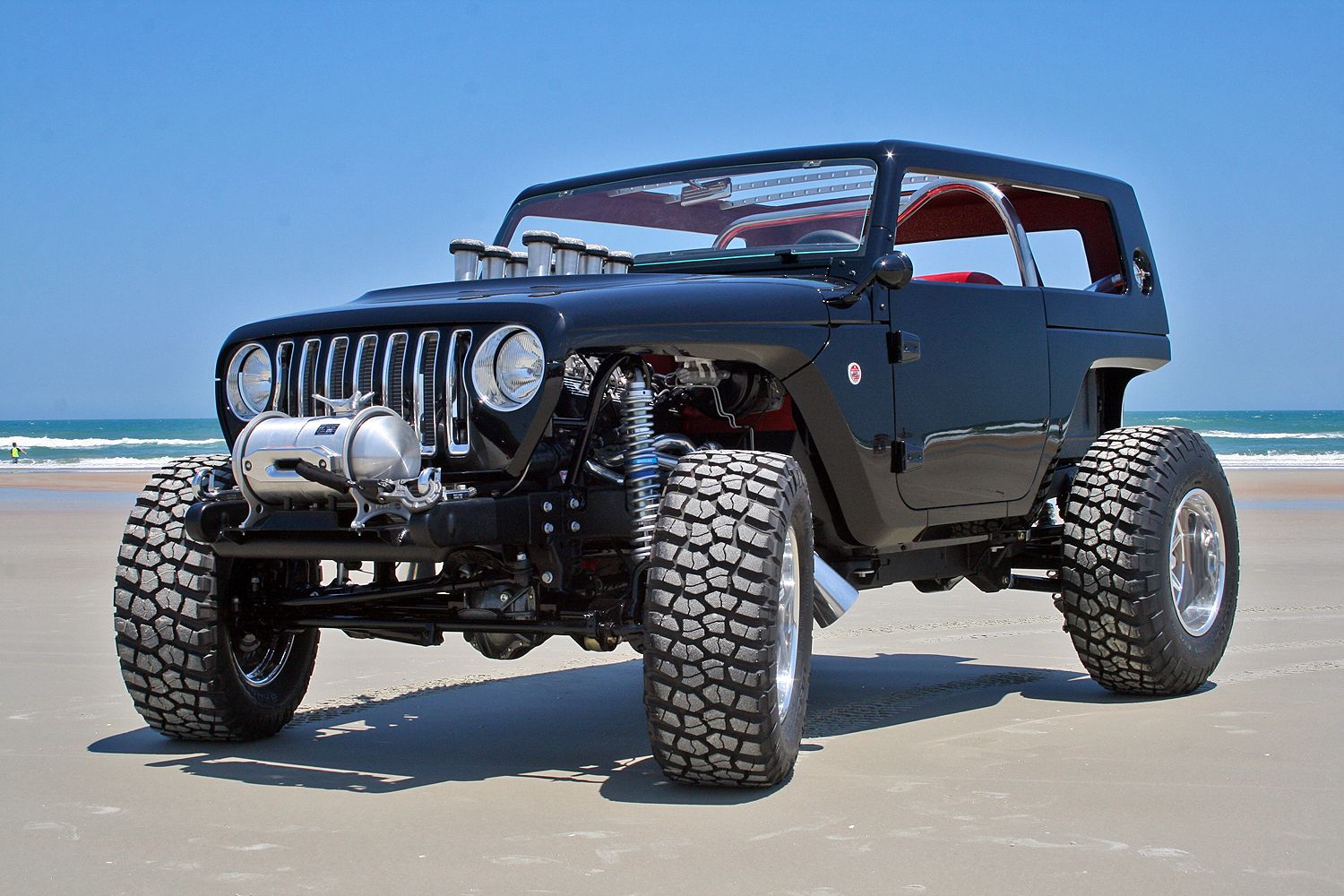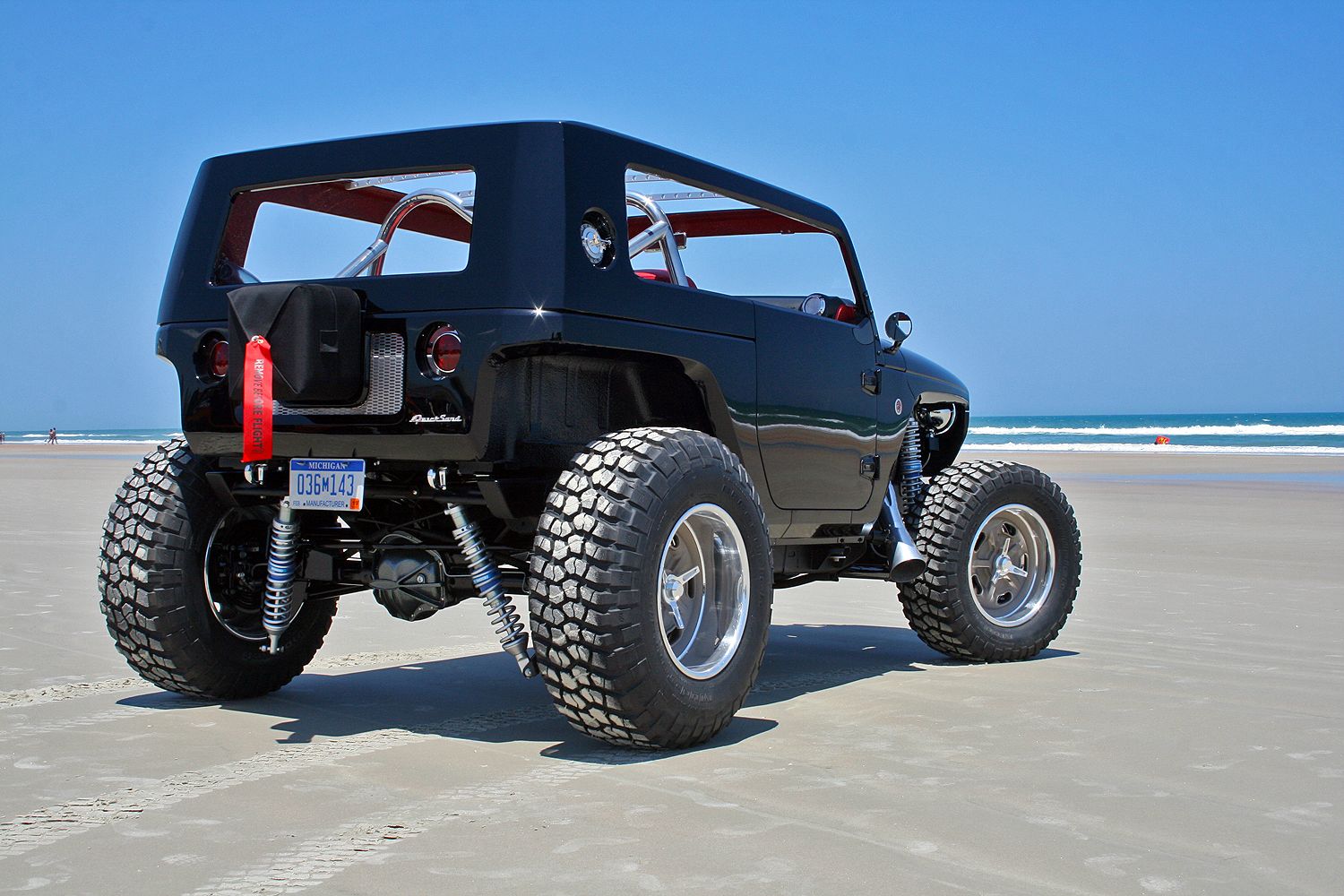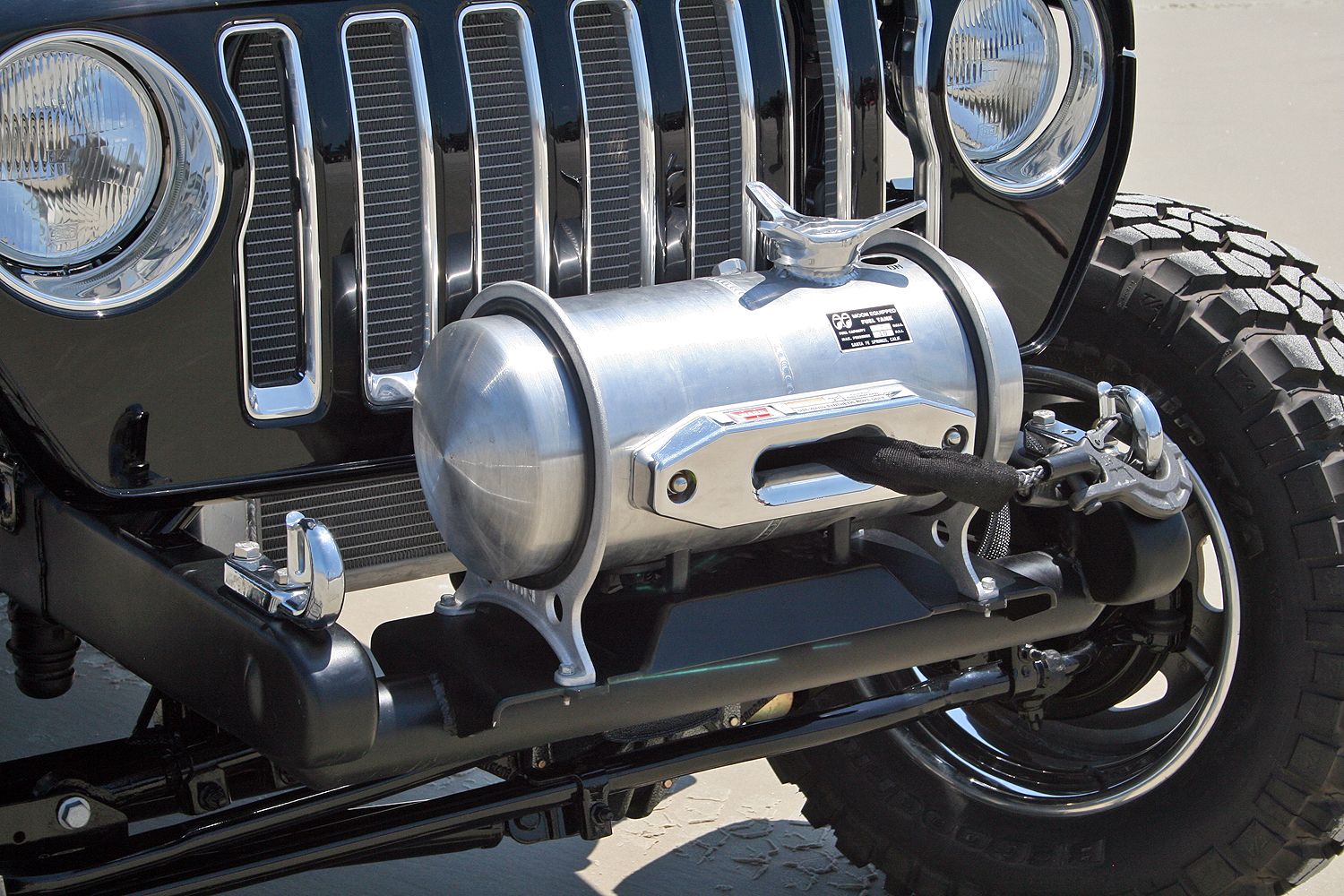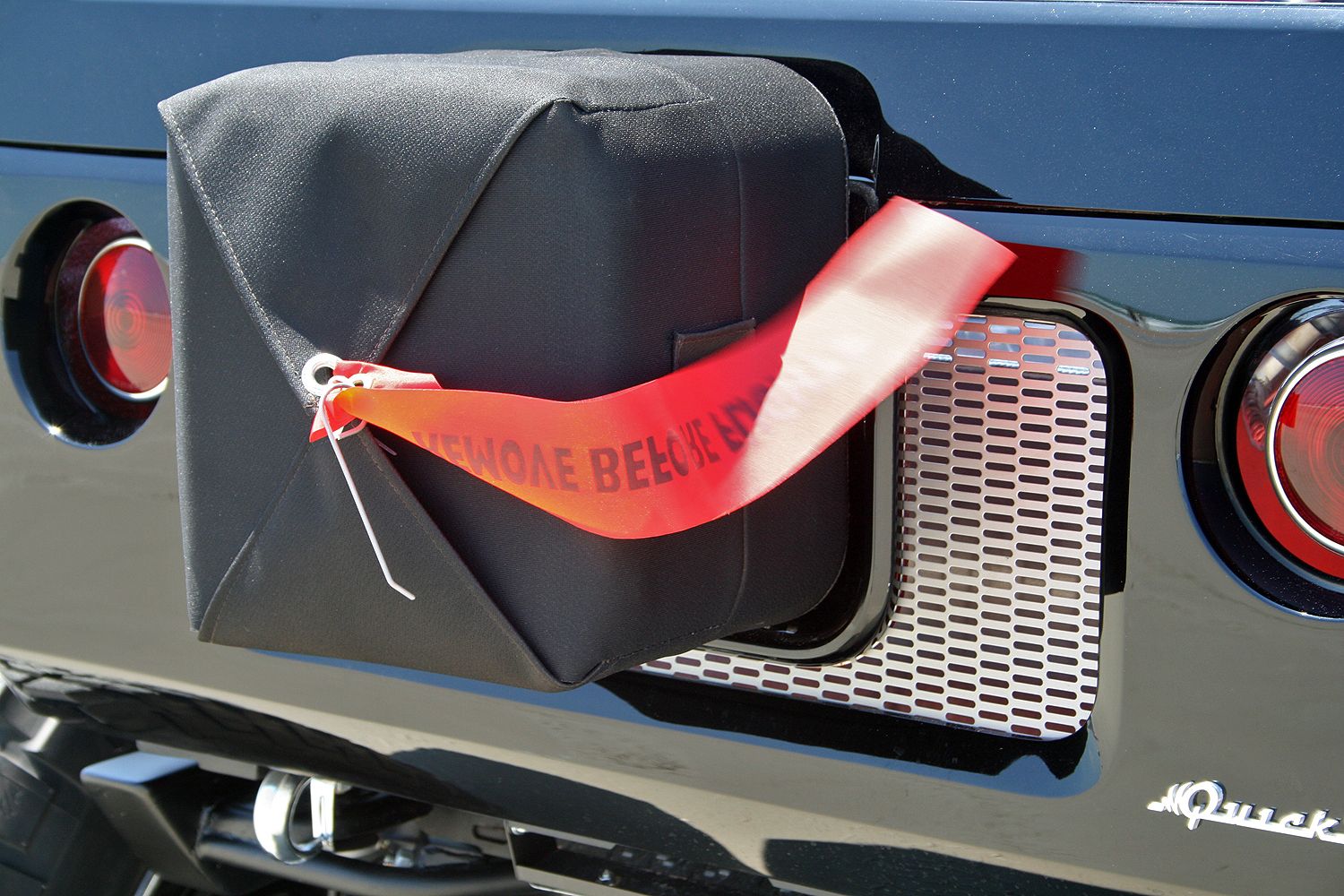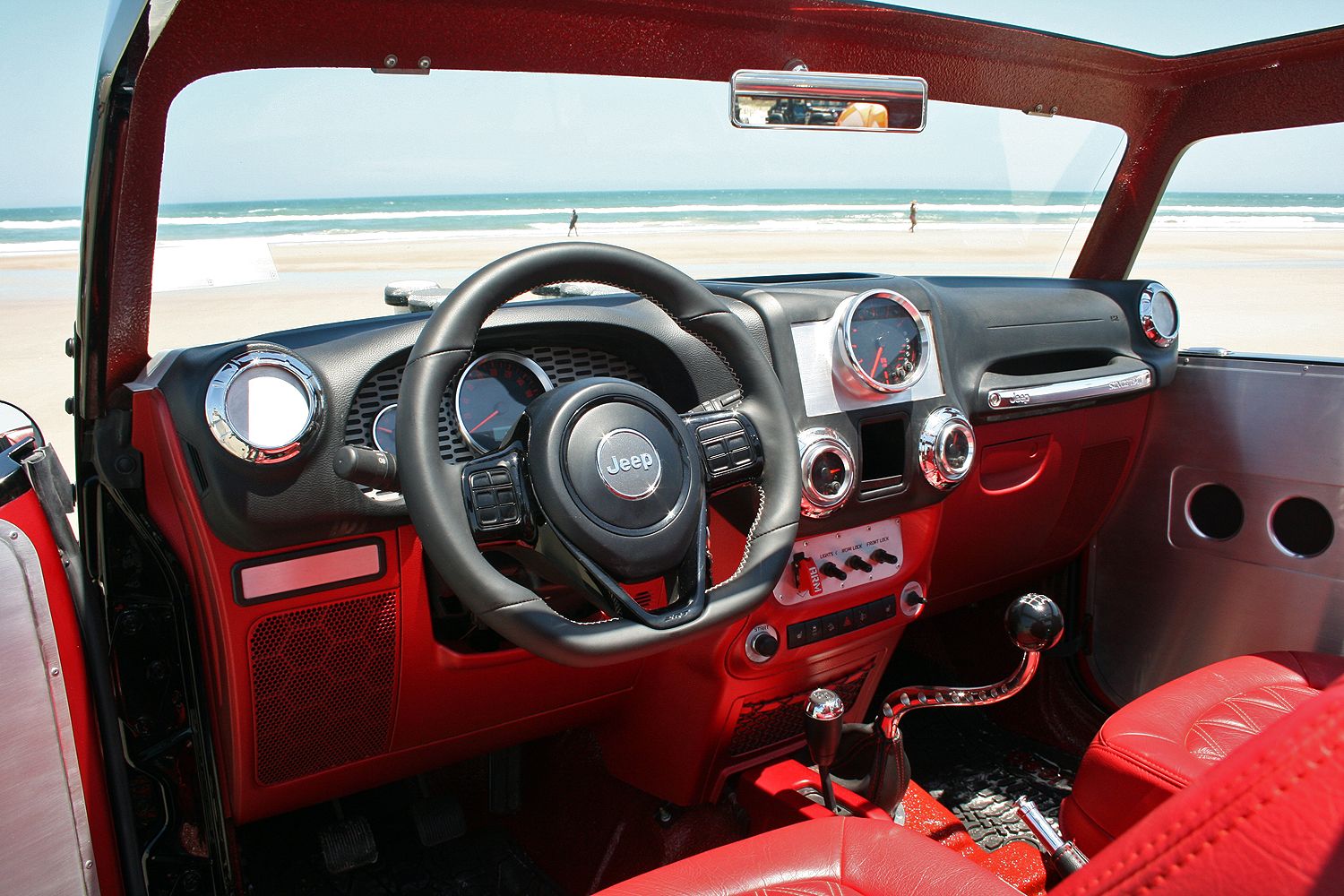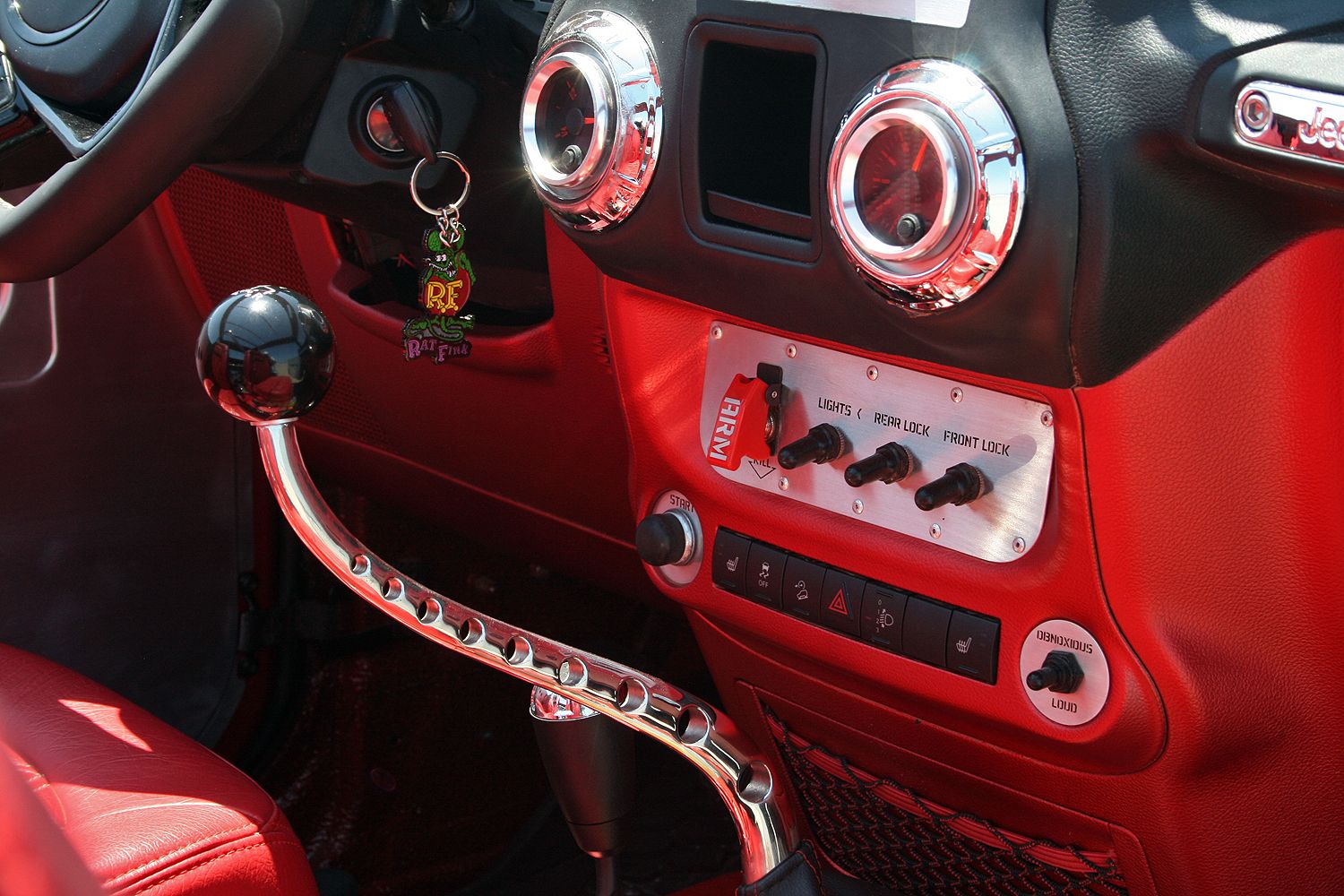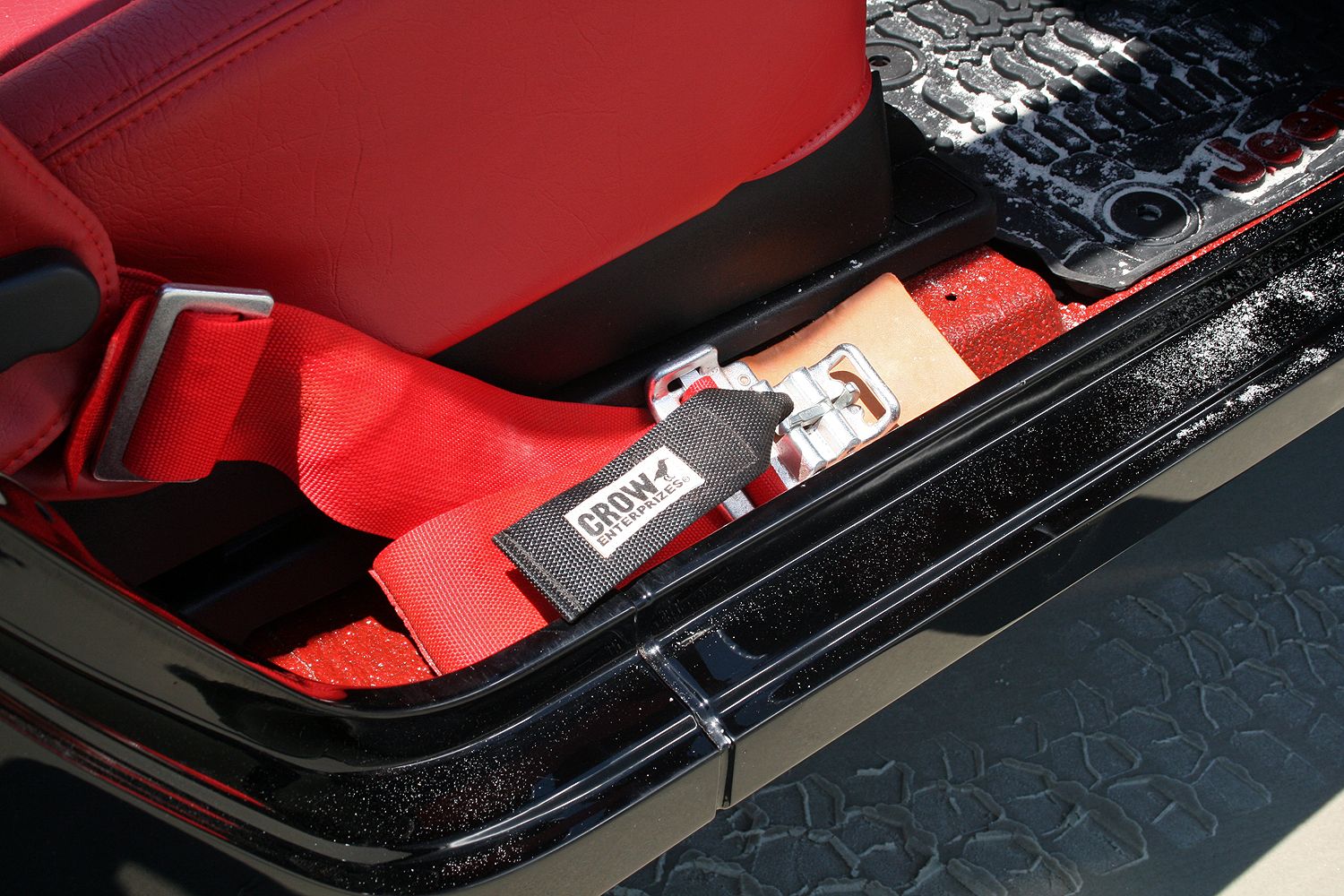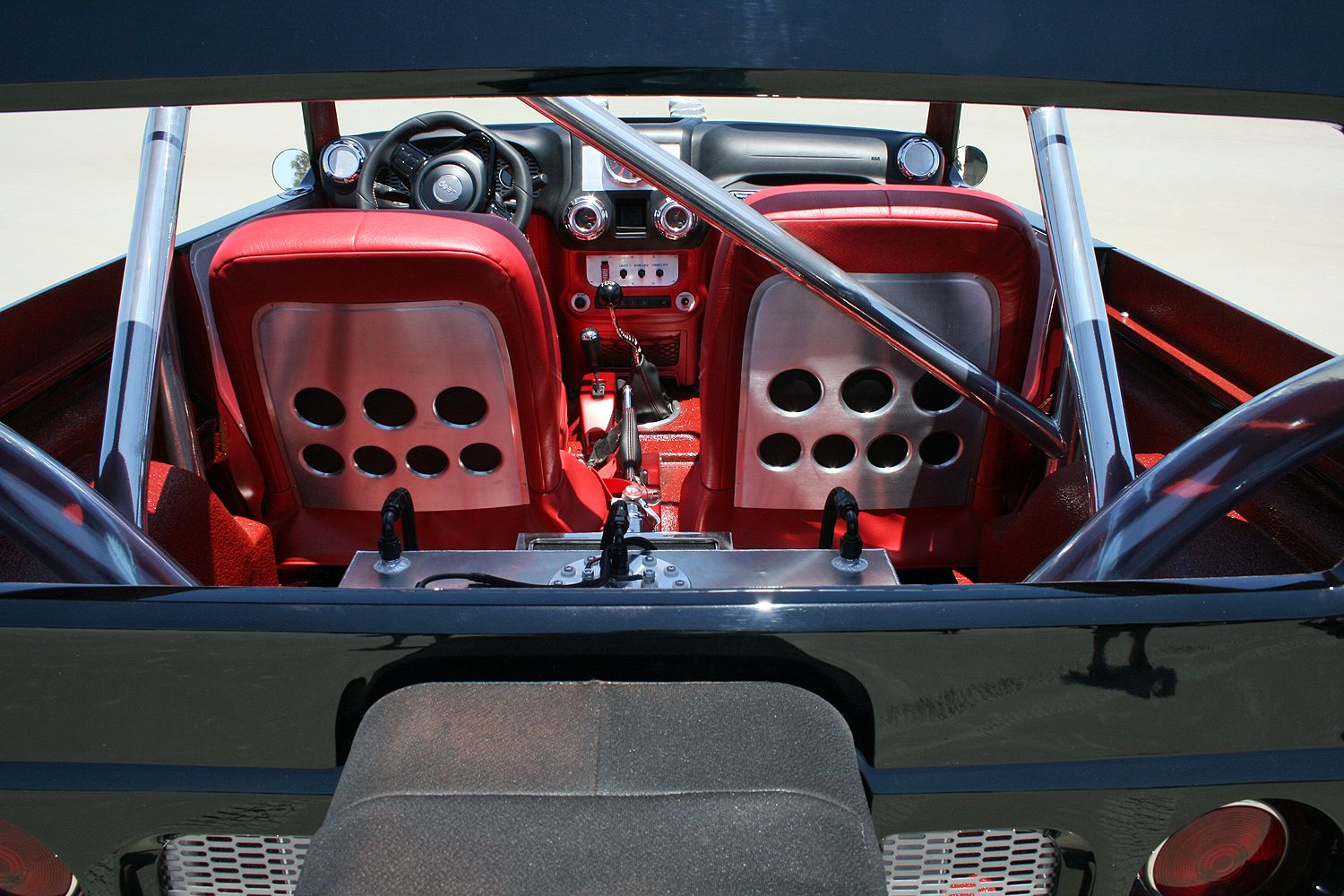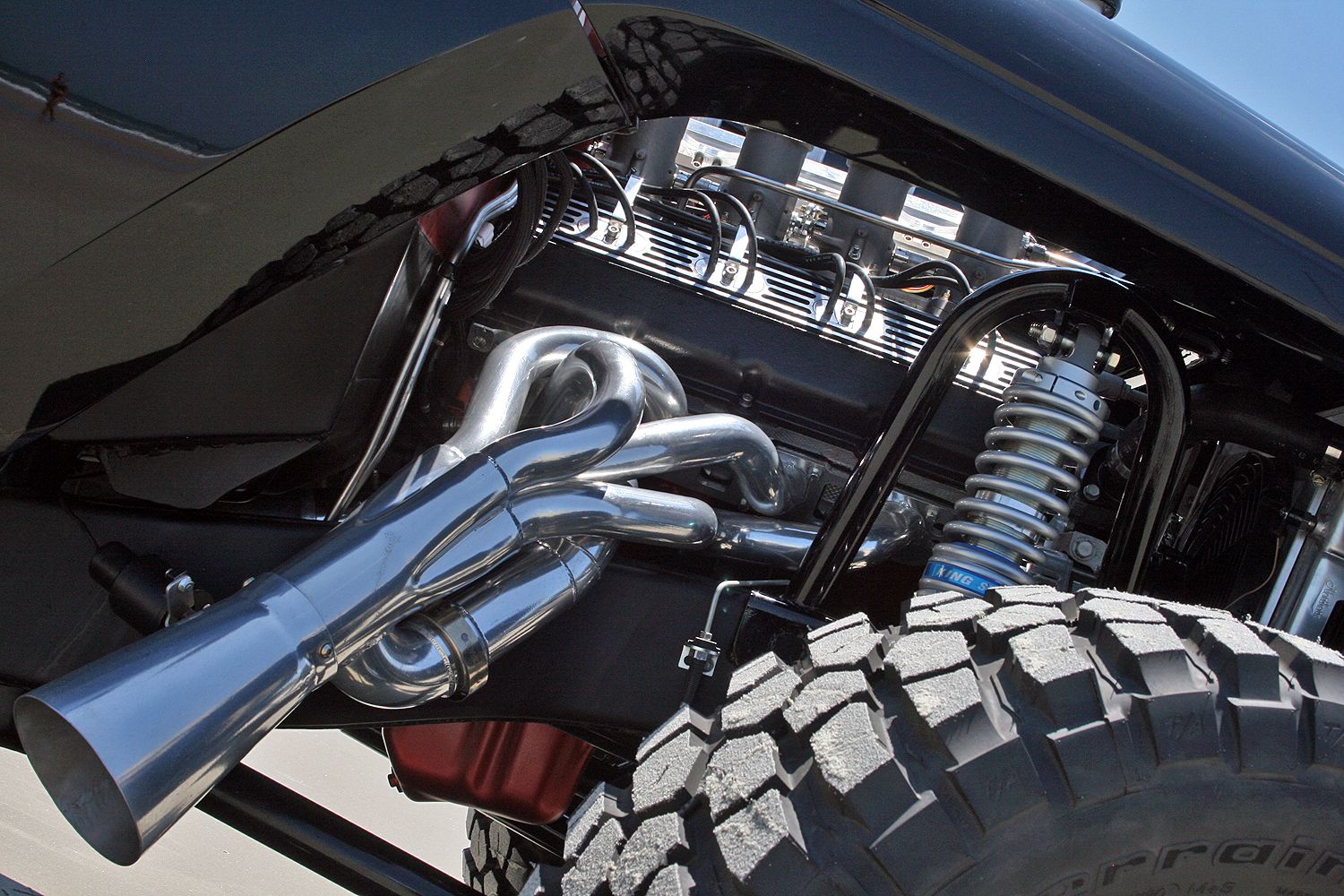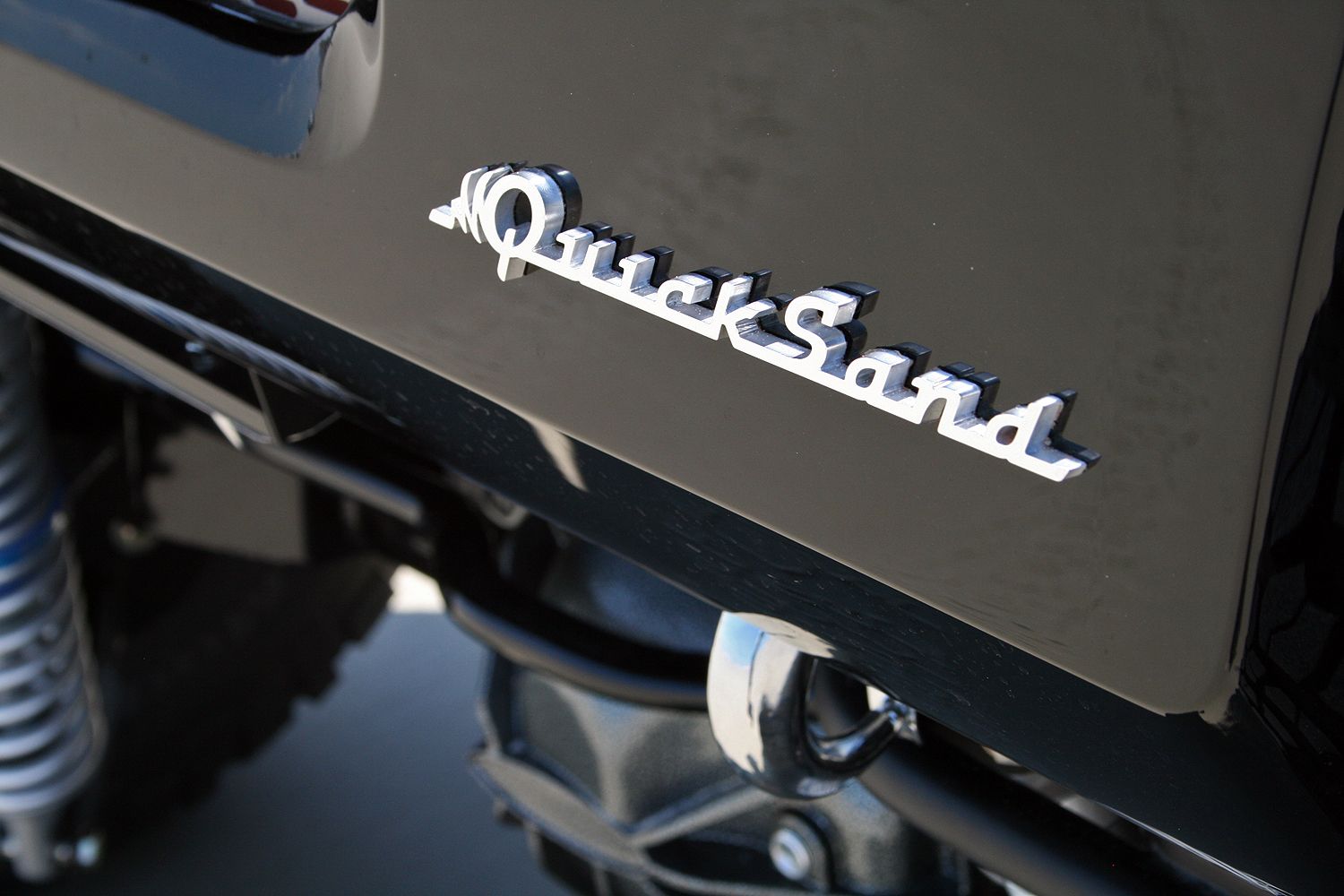Jeep builds some of the baddest concept vehicles, bar none. From mildly accessorized to outright extreme, these concepts showcase the creativity and ingenuity of Jeeps design and engineering teams. But, ask anybody what is the coolest jeep concept is, and you’ll likely get the same answer: the Quicksand. It’s a two-door Wrangler turned 392 Hemi-powered rat-rod with enough attitude to make Rat Fink grin his devilish snarl. Well, I got the chance to get up close and personal with Quicksand at the 2017 Jeep Beach festival in Daytona, and boy, its looks are only half the fun.
Fun’s other half unquestionably comes from the 392 cubic inch Hemi V-8. It’s a crate engine straight from Mopar, the same folks that will sell you nearly any speed part or aftermarket item for your Fiat Chrysler Automobile vehicle. Jeep engineers shoehorned the 6.4-liter iron-block engine between the Wrangler’s frame rails, then built an entirely custom front clip to enclose the engine bay. Velocity stacks suck air into a Borla fuel injection system, while long-tube open headers blast the V-8’s howl into the next zip code. Quicksand hasn’t spent time on a dyno, so no official horsepower or torque specs are available, but a stock 392 kicks out 485 horsepower and 475 pound-feet of torque. You can bet your last dollar the Quicksand makes more than that.
The sand was crawling with Jeeps at The Shores Report in Daytona, the same hotel featured in Tom Cruise’s Days of Thunder NASCAR movie. The annual Jeep Beach event was well underway, with aftermarket companies, thousands of Jeep owners, and Jeep Corporate all descending on the Worlds Most famous Beach. There were Wranglers fully kitted out with massive lift kits and 40-inch tires, full body armor, snorkels, bikini tops, and heavy-duty winch bumpers. There were Jeeps parked tire-atop-tire, showing off their long-arm suspension systems. But none of them garnered half the attention Quicksand did. The thumping Hemi engine pounded its lumpy idle with the six-speed manual in second gear as we coasted down the beach. Everyone within earshot stopped, turned, pointed, and shot photos of the rat-rodded Jeep. This must be what worldwide fame feels like.
The Quicksand’s loud exhaust can be tamed at the flick of a rocker switch on the dash. Electronics close valves in the headers, routing exhaust away from the open collectors and back into a dual exhaust system with mufflers. Not that the mufflers help much, but the sound definitely becomes less “obnoxious.”
Visually, the Quicksand concept is a feast for the eyes. The front grille is likely hinting at the next-generation Wrangler’s design. The bulging hood’s expansive hole has individual velocity plenums protruding out, each feeding its own cylinder. The large-cut wheel wells give a clear view of the King coil-over shocks and headers. Up front, an old-school Moon Tank adds that gasser motif to the build, all the while hiding a Warn 9.0Rc winch inside. Chrome tow hooks bolt to the modified frame rail ends. Out back, the Quicksand’s rear looks nothing like a typical Wrangler. There lack of a bumper, spare tire, and tailgate drive home the hot-rod theme. Integrated taillights, an aluminum grille, and the parachute pack complete the look. But looks can be deceiving. The parachute pack is actually a storage compartment for a synthetic towrope.
Quicksand’s outrageousness continues underneath. Especially from the rear, the King coil-over shocks are easily visible. They’re mounted on low-hanging brackets welded to the DynaTrac axles. Sure, they’re not exactly conducive for rock crawling or deep mud, but they work just fine in loose sand – the Quicksand’s terrain of choice. Grabbing that sand are BFGoodrich Mud-Terrain T/A KM2 tires with staggered sizes. A first for Jeep, the front tires measure 32 inches tall, while the rears are 37s. Such a setup spells disaster for a conventional 4WD system. But of course, Jeep’s engineering team compensates for the size difference by running different gearing in the differentials. The front DynaTrac 44 axle runs 4.56:1 gearing, while the rear Dynatrac 60 has a less aggressive yet perfectly matched 5.13:1 ratio. Both differentials have lockers, too.
Quicksand’s cab is hardly stock, either. The doors are about the most conventional part on the Quicksand, and even they are shaved of their factory plastic handles. The roof is chopped a full four inches and the factory roll cage is replaced with a hot-rod style, chrome-plated hoop. The Plexiglas windshield tilts out, affording some extra airflow. That’s a good thing since the HVAC system has been completely removed. Also gone is the carpet, replaced by a red, spray-on bed liner. The radio is missing, too, replaced with a large tachometer for easy reading. The main gauge cluster is also customized for a far more retro look.
Adding to the high-performance theme is the flat-bottomed steering wheel borrowed from the Dodge Viper, rocker switches on an aluminum plate, and the auxiliary gauges where the HVAC vents would go. The shifter knob reads County Prison in fifth and sixth gears as a not-so-subtle reminder to avoid Jonny Law. Old-school racing lap belts secure the driver and passenger to the low-back bucket seats. Jeep says these are the stock Wrangler seats that have been cut down in height and re-covered with the quilted-stitched red vinyl. Behind the seats live the battery and a racing fuel cell with dual filler necks capped with one-off, racing-style lids. The aluminum caps are engraved with “Detroit Rocket Fuel Only.” They’re amazingly detailed, too.
Overall, the Quicksand concept was an immense hit with the folks at Jeep Beach. It looks amazing, sounds ferocious, and attracts attention better than any one-off vehicle Jeep has ever built. Too bad there won’t be a Quicksand trim level on the upcoming 2018 Wrangler JL…
Read our full review on the 2017 Jeep Quicksand Concept here.

